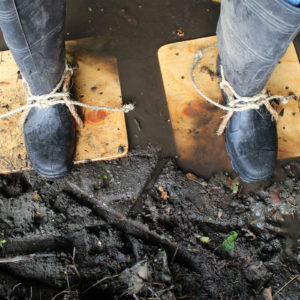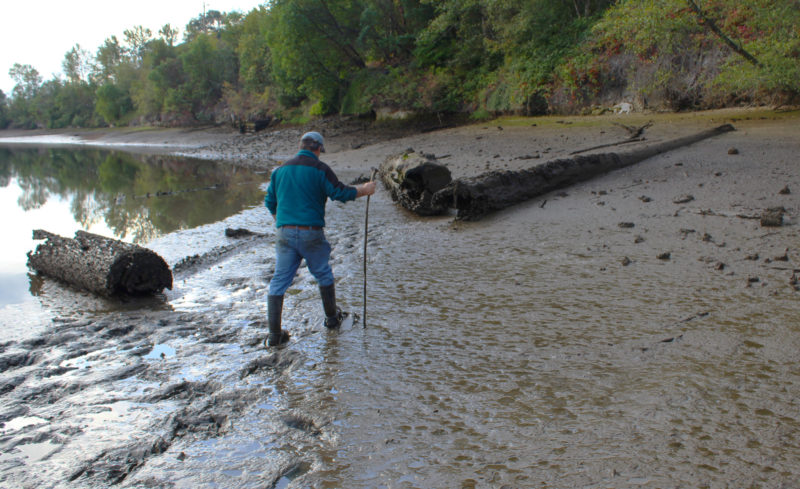 photographs by the author
photographs by the authorMud flats don’t invite strolling, so with a pair of pattens you can have the intertidal all to yourself. A staff is a useful accessory for checking the depth of mud and water and maintaining balance.
When I rowed down the Ohio River, mud was something I had to deal with almost every day. It was the consistency of vegetable shortening and often as deep as my rubber boots were high. Ferrying camping gear from the boat to shore in the evenings and from shore to the boat in the mornings was an arduous process. I would have had an easier time of it if I had known then about mud pattens that waterfowlers use on the mudflats surrounding shoal inland waters along England’s southern coast.
If you’ve read Arthur Ransome’s book, Secret Water, you may remember splatchers: “two large oval boards, with rope grips in the middle of them for the heel and toe, and stout leather straps for fasteners.” Ransome’s drawing of them shows them about twice as long and twice as wide as the soles of the boots of the boy who is wearing them. I once improvised a pair of splatchers with driftwood and rope, and didn’t get far on an intertidal mudflat before I found myself stuck. Both splatchers were so firmly held by suction that I had to cut my feet out of the rope bindings to escape.
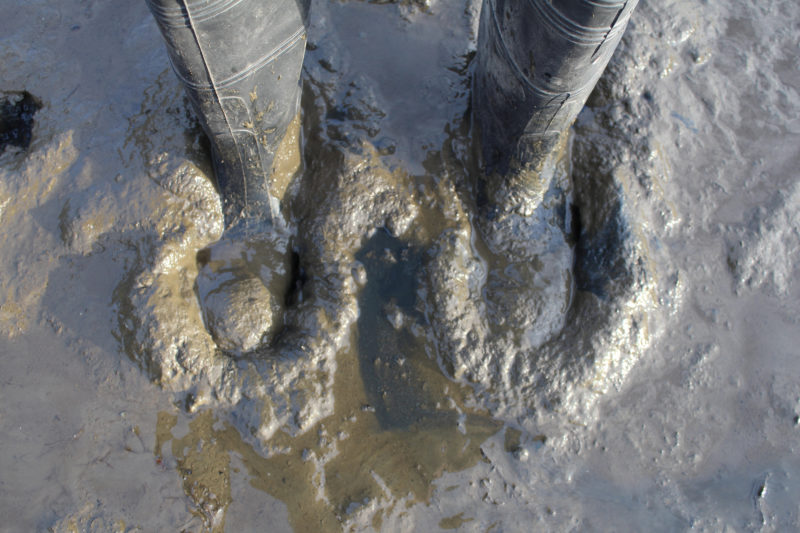
Boots alone sink into the mud, and suction can sometimes pull them right off your feet.
Mud pattens have been in use for centuries and are effective for walking on mud. They’re squares of wood or plywood with three cleats on the bottom, and two loops of thick rope on top. A separate length of lighter rope binds the thicker rope over the boot heel and instep. It’s best to use line that is not slippery, such as nylon, so the knots don’t loosen. I use manila; it has a coarse texture and stays tight.
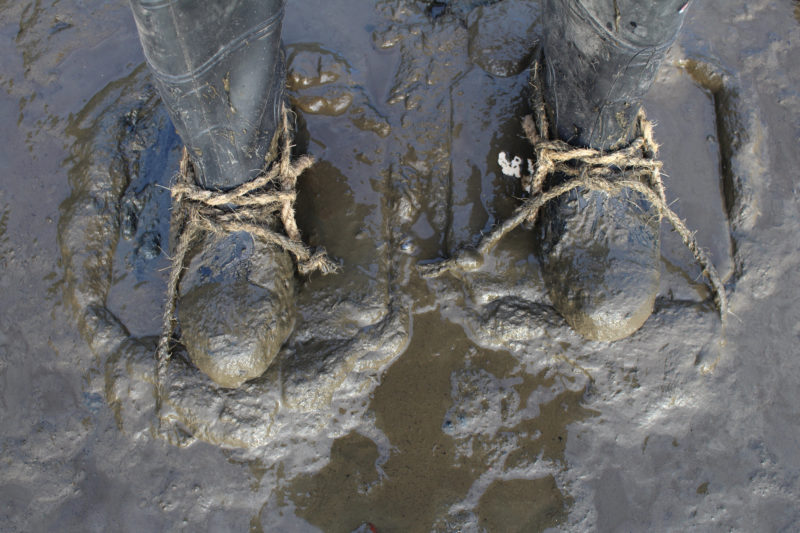
Pattens distribute weight out over a larger area to minimize sinking. The positioning of the ball of the foot at the edge of the patten is what makes it possible to break the suction.
I made my first two pairs of pattens 12″ square, a common size in England. They can vary in size according to the softness of the mud and the weight of the wearer. I made my third pair 14″ square, and it’s a better match for my 220-lb frame.
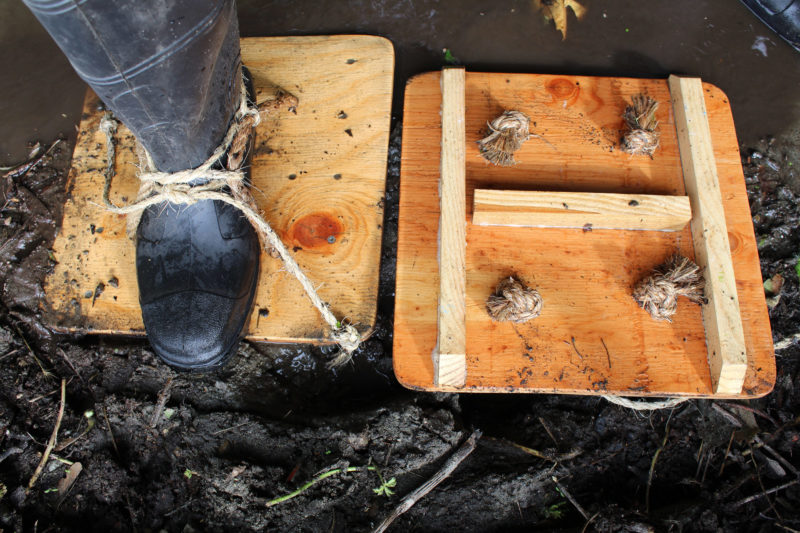
Cleats on the bottom add strength and traction to the pattens.
The grain of the board or plywood runs perpendicular to the boot. The bottom is reinforced with three hardwood cleats—two running the full length from front to back and beveled at the ends, and one in the middle running side to side. The middle cleat stops shy of the longer pair; the gaps make it easier to wash mud off that would otherwise get stuck at the intersections of the cleats. The H-pattern of the cleats help the pattens resist slipping in all directions.
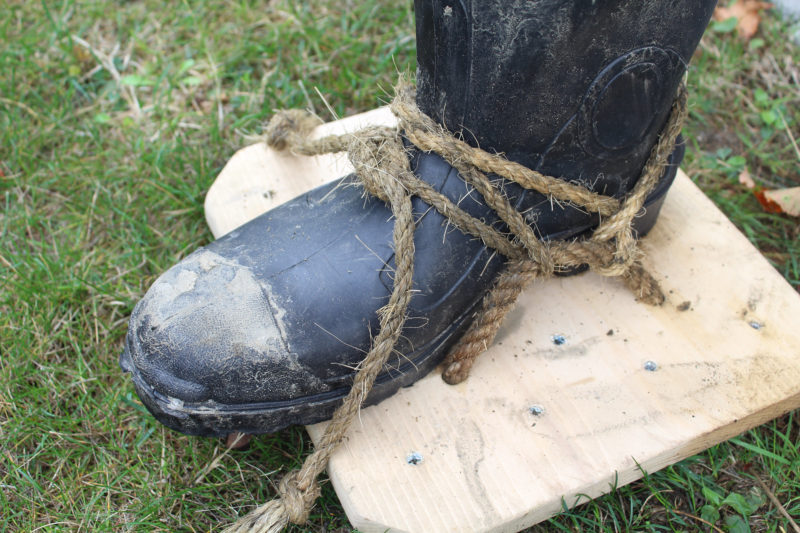
The traditional method of tying a platten on makes a secure connection to a boot. Manila rope holds the knots well. See the video below to see how the line is tied.
The proper placement of the boot on the patten is with the toe sticking beyond the edge. This puts the ball of your foot close to its forward edge, and your heel near its middle. When walking on mud, you use a normal stride, putting your weight first on your heel, where it is distributed evenly across the patten. At the end of the stride, your weight transfers to the ball of your foot and the front edge of patten. That edge sinks while the back edge lifts, breaking the suction and prying the patten out of the mud.
That transfer of weight to the edge is what sets the mud patten apart from the splatcher. Splatchers extend beyond the toe of the boot, as well as the heel, so the weight remains within the perimeter of the splatcher. Since you can’t use the downward force of your weight to break the suction, you have to resort to lifting. That’s not only an ineffective way to break the suction, the upward force you apply with one foot adds to the downward force on the other foot. The more you struggle to release one splatcher, the more difficult you’re making it to release the other. That’s what I discovered with the improvised splatchers I had to cut myself out of. Trying to lift them only got me more deeply mired.
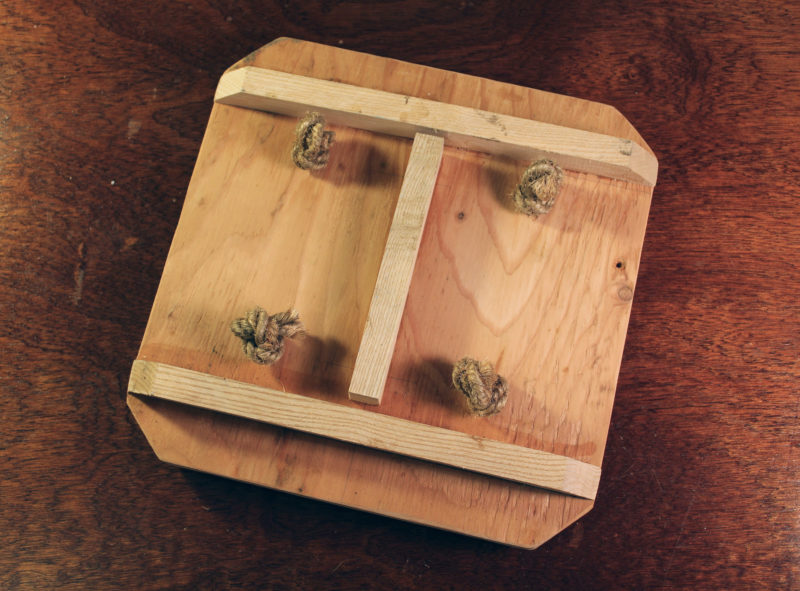
This 12″-square plywood patten has ash cleats, 3/4″ by 1″, set on edge and screwed to the base. The cleats on my 14″ pattens are a bit heavier—7/8″ by 1-1/4″. The 1/4″ gaps at the ends of the middle cleat let water sluice the mud out of the corners when it’s time to clean up. The stopper knots on the rope ends are Figure-8 knots.
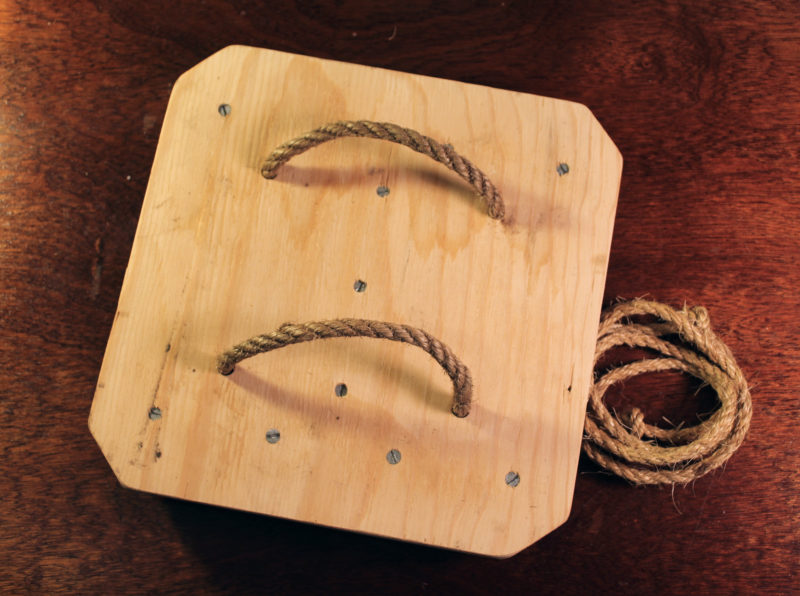
The 1/2″ manila loops are set at a boot’s width and each loop, requiring about 2′ of line, is laced through holes drilled 6″ apart. The lacing line, coiled up here, is about 6′ of 1/4″ manila with a half hitch in each end to keep it from unravelling. The base is made of 1/2″ plywood, the same as I used for my 14″ pattens. My other 12″ pattens have a base of 3/4″ pine.
It takes me less than an hour and a few pieces of wood from my pile of scraps and cutoffs to make a pair of pattens. With them, mud doesn’t have to be a barrier to exploration. They’ve opened up a new landscape just as snowshoes do in snow.![]()
Christopher Cunningham is the editor of Small Boats Monthly. He’s grateful to the Langstone & District Wildfowlers & Conservation Association for steering him away from splatchers.
A note about safety: If you encounter mud that is so soft that the pattens begin to sink, retreat to firmer ground. Larger pattens may work, but it’s possible that the mud is too soft to be traversed safely. Given my experience getting stuck with my jury-rigged splatchers, I’d advise carrying a knife and extra lacing lines.
